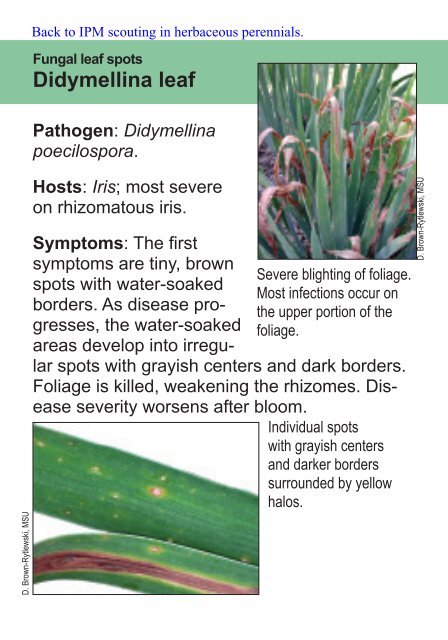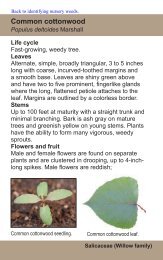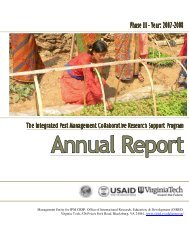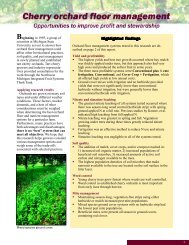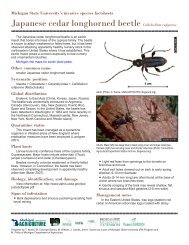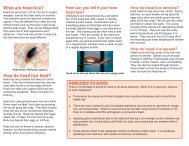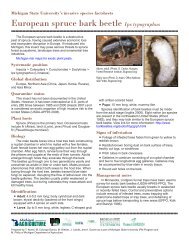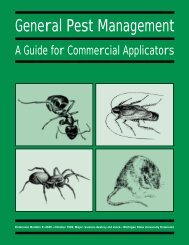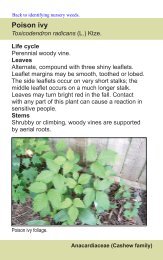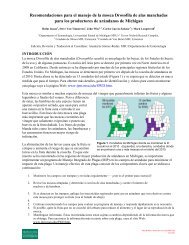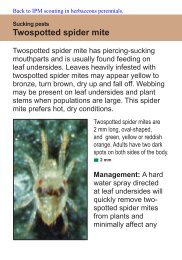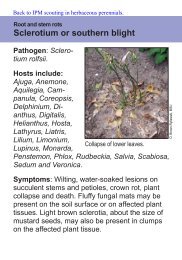Didymellina leaf spot
Didymellina leaf spot
Didymellina leaf spot
Create successful ePaper yourself
Turn your PDF publications into a flip-book with our unique Google optimized e-Paper software.
D. Brown-Rytlewski, MSU<br />
Fungal <strong>leaf</strong> <strong>spot</strong>s<br />
<strong>Didymellina</strong> <strong>leaf</strong><br />
Pathogen: <strong>Didymellina</strong><br />
poecilospora.<br />
Hosts: Iris; most severe<br />
on rhizomatous iris.<br />
Severe blighting of foliage.<br />
Most infections occur on<br />
the upper portion of the<br />
foliage.<br />
Symptoms: The first<br />
symptoms are tiny, brown<br />
<strong>spot</strong>s with water-soaked<br />
borders. As disease progresses,<br />
the water-soaked<br />
areas develop into irregular<br />
<strong>spot</strong>s with grayish centers and dark borders.<br />
Foliage is killed, weakening the rhizomes. Disease<br />
severity worsens after bloom.<br />
Individual <strong>spot</strong>s<br />
with grayish centers<br />
and darker borders<br />
surrounded by yellow<br />
halos.<br />
D. Brown-Rytlewski, MSU
<strong>Didymellina</strong> <strong>leaf</strong> <strong>spot</strong> – continued<br />
Necrotic tissue<br />
coalesces around the<br />
<strong>leaf</strong> <strong>spot</strong>s.<br />
Spread: Rain and splashing water disseminate<br />
spores to adjacent plants. The disease can easily<br />
be introduced on infected plant material.<br />
Management: Good sanitation is important. Leaf<br />
debris should be removed in the fall to reduce<br />
inoculum, which overwinters on the dead foliage.<br />
If infected debris is left in the area in the spring,<br />
the pathogen can sporulate and reinfect developing<br />
foliage.


